I'm feeling kind of entropic today.Good ol' thermodynamics.

I'd say that it killed poor Boltzmannn, but when it's all said and done, it kills everybody.
-
WANTED: Happy members who like to discuss audio and other topics related to our interest. Desire to learn and share knowledge of science required. There are many reviews of audio hardware and expert members to help answer your questions. Click here to have your audio equipment measured for free!
You are using an out of date browser. It may not display this or other websites correctly.
You should upgrade or use an alternative browser.
You should upgrade or use an alternative browser.
Audiophiles, generally don't like class D amps!
- Thread starter roog
- Start date
Pick up your mess.I'm feeling kind of entropic today.Any suggestions?
mhardy6647
Grand Contributor
- Joined
- Dec 12, 2019
- Messages
- 11,409
- Likes
- 24,769
Well -- Don't do what Boltzmann did!I'm feeling kind of entropic today.Any suggestions?
... and contribute to the heat death of the Universe?Pick up your mess.
No way!
I try to stay as close to equilibrium as humanly possible.
YMMV
Sokel
Master Contributor
- Joined
- Sep 8, 2021
- Messages
- 6,157
- Likes
- 6,250
Maybe the distortion rise is not only by frequency but by input level too.Yes.
The Distort software does not do distortion rising with frequency according to its designer, although he said he had written the code for it but never released it because he thought the idea was a too arcane for most people. But most amps using feedback have distortion rising above a certain frequency (dependent on the GBP and how much loop gain is in the design). So without that feature Distort is a bit of a red herring if your goal is to model how audible distortion is in most amps.
As you know the ear treats the 2nd and 3rd as being pretty innocuous, so yes, you have to add a lot to really hear it. IIRC GE did a study back in the 1960s that concluded that people will tolerate up to 30% THD if its all 2nd but I read that in a book and never found it online. Of course there was something similar to this effect published in the early pages of the Radiotron Designer's Handbook, 3rd edition (published in the 1930s). I was clued into that bit by John Curl.
Right now I'm of the opinion that distortion vs frequency might be more important than actual THD in terms of how audible the distortion might be. Its worth noting that many class D amps of the self-oscillating variety such as Hypex tend to have no rise in distortion with frequency because they have excellent GBP values, like a lot of the better opamps around these days. So they have that plus very low THD to start with- a one two punch.
Regarding evidence, did you try the demo test I mentioned a little bit ago- the one with the amp, speaker, generator and VU meter? If no, its really worth doing because otherwise its hard to understand how the ear can be so sensitive to higher ordered harmonics. After you do that demo, its pretty obvious. That's the first bit of evidence.
That's probably one of your competitors,an Audio Research LS28 pre and here's what I got in a Noise vs level and THD vs level (I thought it would be better to break SINAD to it's elements for better visuals)
Unbalanced I/O,loopback through the E-MU,measured levels are RMS,rest of the settings all visible at the chart,E-MU and AR at about unity gain:
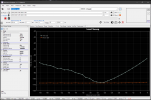
Is that strange or what?
And that's how it looks at the last clipped level:

Really strange stuff.
Last edited:
I must have missed this- could you link or give me a short description?Regarding evidence, did you try the demo test I mentioned a little bit ago- the one with the amp, speaker, generator and VU meter? If no, its really worth doing because otherwise its hard to understand how the ear can be so sensitive to higher ordered harmonics. After you do that demo, its pretty obvious. That's the first bit of evidence.
I'm certainly familiar with GedLee, but their work is for distortion levels and distributions that one doesn't generally see in amplifiers.
How so? Looks pretty normal to me.Really strange stuff.
Sokel
Master Contributor
- Joined
- Sep 8, 2021
- Messages
- 6,157
- Likes
- 6,250
Total newbie,I'm used to DAC and solid state stuff (note,extremely limited collection,newbie operator and ancient interface),so...How so? Looks pretty normal to me.
It's good to know it's normal,thanks.
If you look at the left side of the first graph, that's noise dominated, that is, the THD+N measurement shows a constant (more or less) noise floor with the increasing signal level causing a decrease in the THD+N measurement until you hit the point (in the middle) where the distortion starts rising above the noise floor (the right side) and dominates the measurement.Total newbie,I'm used to DAC and solid state stuff (note,extremely limited collection,newbie operator and ancient interface),so...
It's good to know it's normal,thanks.
The distortion spectrum is also pretty normal for a preamp that has active devices in push-pull (i.e., third harmonic is dominant, 2nd is a function of side to side imbalance, perfect balance cancels all the even order components).
Sokel
Master Contributor
- Joined
- Sep 8, 2021
- Messages
- 6,157
- Likes
- 6,250
There's no THD+N in this measurement,it's broken down to noise and THD only,that's what I thought is strange.If you look at the left side of the first graph, that's noise dominated, that is, the THD+N measurement shows a constant (more or less) noise floor with the increasing signal level causing a decrease in the THD+N measurement until you hit the point (in the middle) where the distortion starts rising above the noise floor (the right side) and dominates the measurement.
The distortion spectrum is also pretty normal for a preamp that has active devices in push-pull (i.e., third harmonic is dominant, 2nd is a function of side to side imbalance, perfect balance cancels all the even order components).
Noise is constantly at about -104db (-108db(A) ) dominated by the mains noise probably and it's only THD falling and rising with level.
That's how it looks like at -3db and -15db input gain:
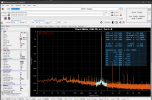
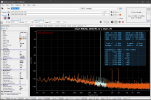
Distortion (almost exclusively H2 and H3 ) rises exponentially vs level.
I suspect interface's contribution to this so for sanity check that's it's own loopback at the same levels:
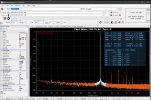
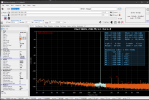
I believe you can see them better now.
Edit:gain definition
Last edited:
I'm not a user of REW so I can't diagnose what you did or how the software interprets the data, but that curve is absolutely THD+N.There's no THD+N in this measurement,it's broken down to noise and THD only,that's what I thought is strange.
That will depend on the FFT parameters.Noise is constantly at about -104db
Sokel
Master Contributor
- Joined
- Sep 8, 2021
- Messages
- 6,157
- Likes
- 6,250
It's not REW,it's @pkane 's Multitone Analyzer.I'm not a user of REW so I can't diagnose what you did or how the software interprets the data, but that curve is absolutely THD+N.
That will depend on the FFT parameters.
FFT size is 256k,Blackman-Harris 7 window with 87.5% overlap.Measured level are dbr RMS.
So,I did the same sweep with THD+N and THD only visible (you can do just about everything with MT) and they track each other nicely and the results are sane for a tube pre I believe.

- Joined
- May 26, 2021
- Messages
- 512
- Likes
- 809
I must have missed this- could you link or give me a short description?
I'm certainly familiar with GedLee, but their work is for distortion levels and distributions that one doesn't generally see in amplifiers.
Link
Well, no-one would argue that 50% harmonic distortion isn't audible.
Now do the same thing with the same relative harmonic distribution but, say, at 0.5%. What happens?
DSJR
Major Contributor
I have the original Musical Fidelity one in cylindrical case. It added warmth to cruder sounding CD players such as the CD63 KI Signature player. I did the Rock Grotto updates to mine including special valves he recommended and it became so transparent there was absolutely no need to use it any more as it made little to no audible difference! he's taken it further now but no idea how 'different' it is audibly. The thing now lives in the loft with other stuff I've accumulated.That's what's fueled the market for $50 (USD) "tube buffers" for a generation!
If they actually were buffers, they'd do nothing (except, possibly, you know... buffer). Instead, I think most of them have been little "effects boxes" (i.e., distortion generators).
View attachment 350069
dang! this one's 120 smackers!?!
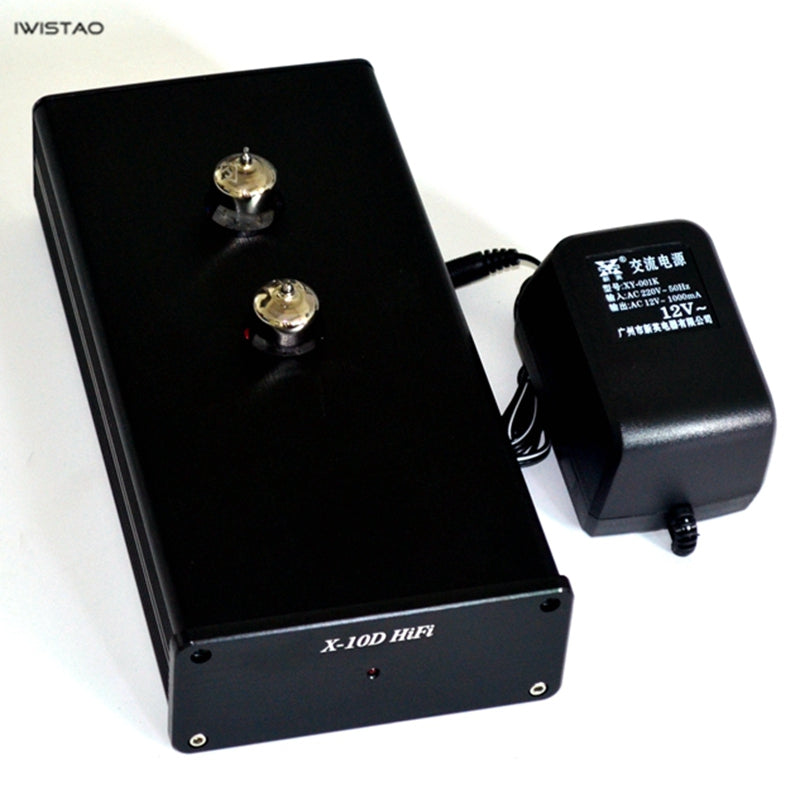
IWISTAO Tube Buffer Preamplifier X10-D Music Fidelity 6N11 No Gain
IWISTAO Tube Buffer Preamplifier X10-D Music Fidelity 6N11 No Gain AC12V Power Adapter Sweet Natural Taste HIFI Audio X10-D Music Fidelityiwistao.com
or just whip up something like this.
View attachment 350071
source: https://www.worldradiohistory.com/B...ooks/RCA-Receiving-Tube-Manual-1954-RC-17.pdf
... or...
View attachment 350072
source: https://www.worldradiohistory.com/B...ooks/RCA-Receiving-Tube-Manual-1961-RC-21.pdf
Last edited:
- Joined
- May 26, 2021
- Messages
- 512
- Likes
- 809
I'm not sure what you are asking. Is this having to do with Distort?Well, no-one would argue that 50% harmonic distortion isn't audible.
Now do the same thing with the same relative harmonic distribution but, say, at 0.5%. What happens?
If yes, without the distortion vs frequency rise thing built in you likely aren't going to hear much. This is why I think DvsF is likely one of the more important measurements.
The advantage that self-oscillating class D amps offer to 'audiophiles' as they can have a lot of feedback without the ills of high feedback discussed in the late 70s and early 80s yet no rise in distortion with frequency, since Gain Bandwidth Product of some very high values are easily obtained.
Similar threads
- Replies
- 33
- Views
- 2K
- Replies
- 31
- Views
- 2K
D
- Replies
- 10
- Views
- 520
- Replies
- 148
- Views
- 7K
- Replies
- 6
- Views
- 721
